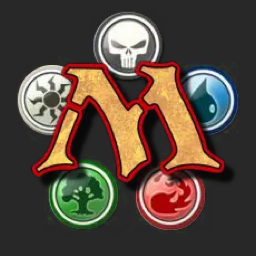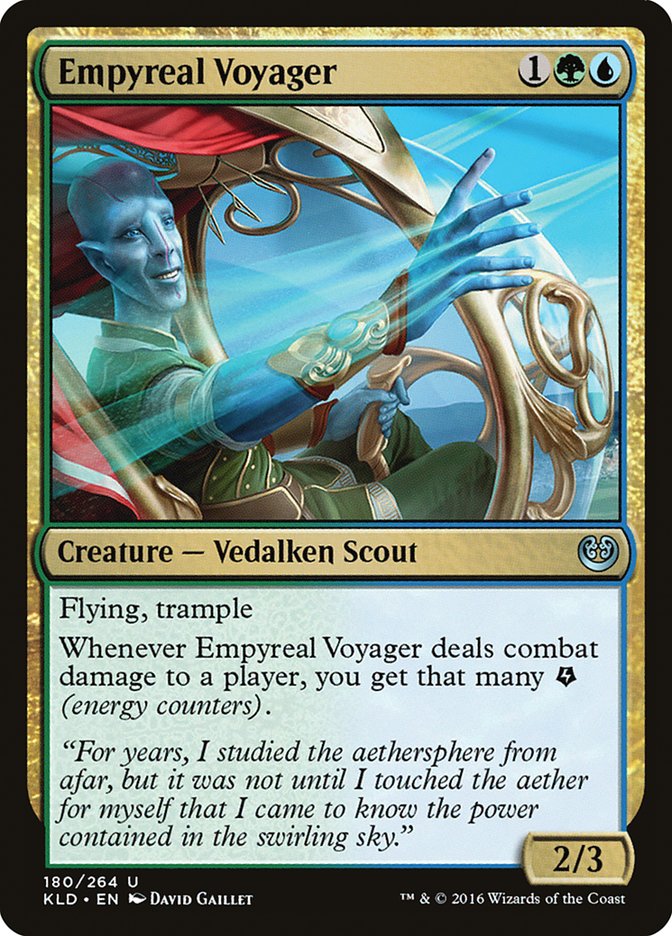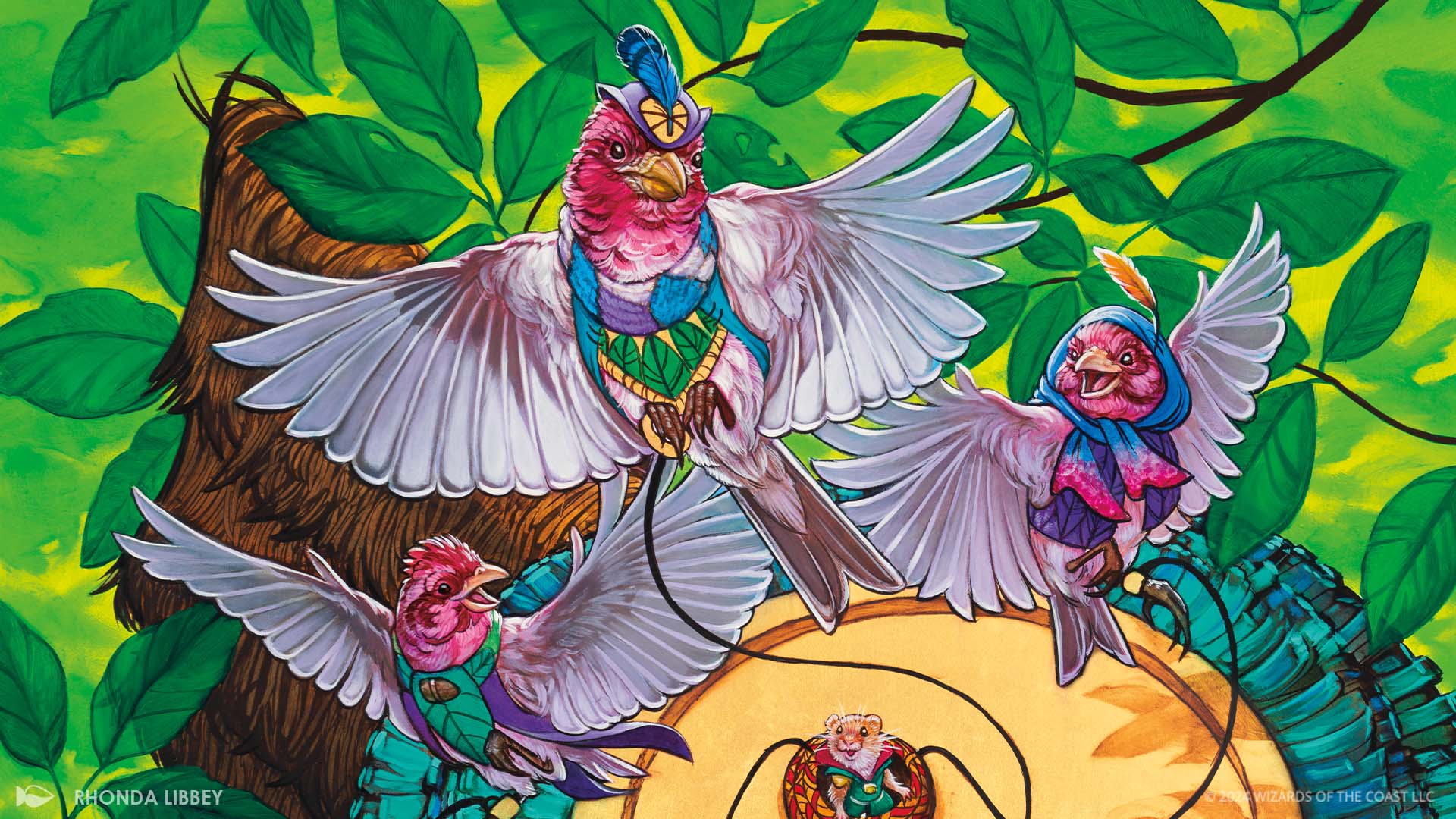Silverchase
- 40 Posts
- 32 Comments

 6·1 month ago
6·1 month agoLike thomasw, I’m wondering what format this is for. What are the quantities of each card? Without knowing more details, it will be hard to give useful advice. Counting the amount of cards you listed, I’m suspecting this is for a 60-card format but you’re only using one of each card?
- If this really is a 60-card deck, try the nine-card deck technique to focus your deck. Choose the nine nonland cards your deck needs, get four of each, and put in 24 lands to get a decent starting point for a 60-card deck.
- What is Swiftfoot Boots for?
- Some cards don’t look relevant to your game plan:
- Cogwork Wrestler
- Unstoppable Plan
- Sleep-Cursed Faerie gets worse with Doubling Season.
- You don’t have enough Elves for Imperious Perfect to be impactful.
- Finally, are you a token deck or a +1/+1 counter deck? Half of the deck goes one way and the other half goes the other way. It would suck if you drew the wrong half because there’s little that makes the two work together.
By the way, if you want a fun Brawl deck, Bristly Bill is a cheap commander that can work well with common/uncommon wildcards. Throw in land ramp, creatures that benefit well from +1/+1 counters, and punch cards like Hard-Hitting Question and Bite Down.
Start your engines is going to be auto-crewing vehicles
Death’s Sweet Ride

 3·5 months ago
3·5 months agoA classic

 6·5 months ago
6·5 months ago#FreeTwin
Tucked tail. Excellent form.
Two monocolor reprints, each of a different color, that together win you the game.
#freetwin

 3·8 months ago
3·8 months agoThe mythical Renardeaux, Quebec, the nation’s best-kept secret

 3·8 months ago
3·8 months agoI was struggling to figure out how to express another problem, but I just thought of how to say it. This deeply entrenches metagaming into the game’s formats, since competitive players will even more greatly want to keep secret strategies in their pockets so the wider scene only finds out after they’ve already reaped the benefits.
Basically, it’s the Magic version of arbitrage. Everyone in Modern is sleeping on Séance, so you keep quiet about your Séance brew until it’s Pro Tour time and you get to cheese wins with an undercosted Séance.
Tangent time! During Pro Tour Amonkhet, there was a cheesy WU snake deck in draft. Some of the competitors expected Slither Blade to be badly underpicked, so forced decks full of those and Trials of Solidarity. It worked. Once this archetype went public, it stopped working because people were actually trying to pick that snake now. As far as I know, there was no other deck for Slither Blade, so this was basically insider metagame trading.
Okay, okay, paragraphs. I know you said this was about more than just Magic, but I don’t have enough confidence in my game design or macroeconomics knowledge to say anything insightful in that regard. I mean, some board games have auctions.

 10·8 months ago
10·8 months agoOne obvious problem would be that some cards are good no matter the cost. I’m going to reanimate an Emrakul even if the card costs 40 mana. Manaless dredge will still be manaless.
In some formats, this would be an excessively obtuse ban list. Obviously oversimplifying, if anything with mana value 4 or higher is utterly unplayable in Modern, any popular cards that “price out” is effectively just banned. People are playing Llanowar Elves to hit 3 mana on turn 2 for a Stone Rain or something. If the price of either changes, whether up or down, that just kills the point of trying to play them.
Could this work in a game that’s explicitly designed around live market prices? Yeah, I’m sure NFT games are ready for their comeback :P.
And now, I present without comment that time Valve tried dynamic pricing in Counter-Strike: Source and people could spam buy cheap guns until the server crashed.

 18·8 months ago
18·8 months agoNewgrounds is dead serious about preserving its content, even with the death of Flash. Ruffle, the Flash emulator, was created by a former employee and Newgrounds is a major sponsor of the project. The most important movies have been converted to video as well.
When Newgrounds adopted high-resolution thumbnails about a decade and a half ago, there was a big volunteer campaign to recreate thumbnails for the entire back catalogue of the portal.
Thanks to Ruffle, people can and are still submitting Flash content to the portal, in addition to web-friendly content!

 2·8 months ago
2·8 months agoStrictly mechanically, it’s pie-compliant. Just because no card like that was printed prior to that Great Designer Search quiz doesn’t mean it’s a break. As a comparison, flying trample is typically mono-black, but there’s no issue with those two abilities on a blue-green creature; blue provides the flying and trample provides the green.
Oh, hey.


 2·8 months ago
2·8 months ago(2, 3, 5, 7, 11, 13, 17, 19, 23, 29, and 31 are prime numbers.)
Proper Quandrix representation
My prerelease promo was Maha. I had enough lizards to run the BR lizard
snowfireball. I won the event without losing a game. In one game, I kept a hand of just five lands and Maha!I also had a very interesting game involving Iridescent Vinelasher. I had it and the offspring copy out alongside Flamecache Gecko. Late in the game, I burned out my opponent by discarding the castable cards I topdecked; I actually wanted to draw lands so I could play them for 2 damage every turn.
Yeah, Junk tokens felt like a natural setup for this set, even though it was probably developed independently.

 4·10 months ago
4·10 months agoWanderhome and Root: the RPG are existing takes on this style of setting as an RPG. There’s a whole world of role-playing games beyond just that one!

This “just in case” attitude is sacrificing your ability to build to your game plan. Just in case what? Ideally, every card in your deck should be “live” in as many situations as possible. Sleep-Cursed Faerie will not do much to defend you early on and is actually bad once you’re set up with Doubling Season. Fog Bank will block a creature, but it’ll never win you the game.
Every card that’s not contributing to what you want to achieve (building counters fast or making lots of tokens) is wasting your draw step. Imagine if you started with Campus Guide, a creature that lets you have a land next turn. Wouldn’t you have been happier with a second Llanowar Elves, which deploys sooner and accelerates mana production? Instead of drawing Unstoppable Plan, you could have drawn one of your four copies of Proft’s Eidetic Memory.
My examples here are overly narrow, but my point is that putting a card in your deck has an opportunity cost: you lose the chance to put a different, more synergistic card in. You want to concentrate the amount of cards in your deck that make you say, “yes, this is just what I wanted”, which is certainly Doubling Season and cards that make tokens or counters. The more of those you have, the fewer draw steps it takes you to find them all. You’ll get to winning sooner.
The first steps to achieve this is to cut down to 60 cards and make sure your most important cards are 4-of each.
Swiftfoot Boots protects only one creature. If you’re a doubling token deck, you’ll have way more than one creature to protect. Negate would probably do a better job in that case.
Having irrelevant cards is also one of your deck’s weaknesses. Your opponents will be happy to see you spend your turn doing nothing because the card you drew doesn’t do anything with Doubling Season.
I highly recommend it. The only card I know of in standard that can really fuse the two strategies is Insidious Roots, which would require you to ditch blue for black.
Again, try the nine-card deck exercise. It’ll get you to think about what role each card in your deck plays.